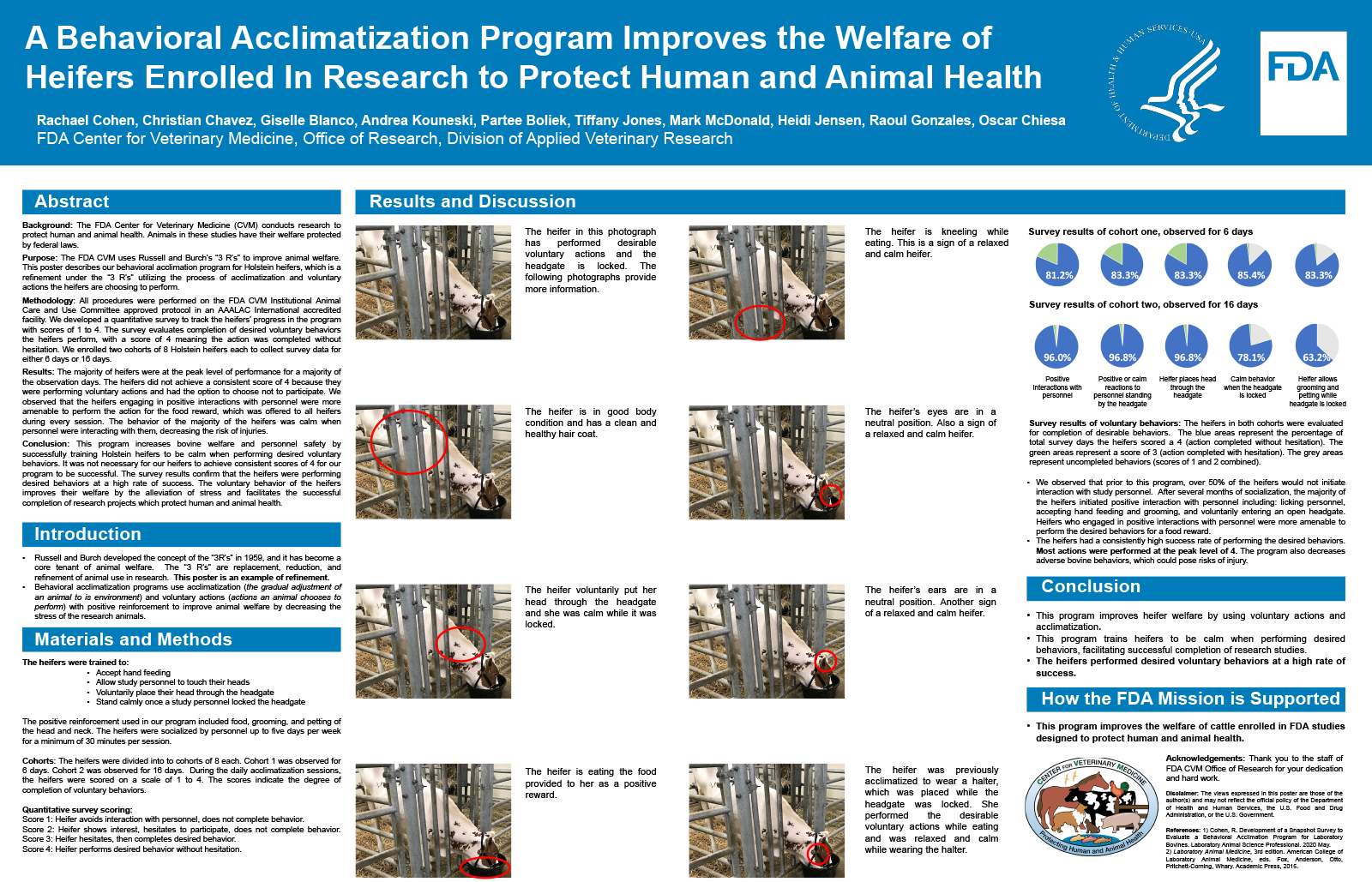2021 FDA Science Forum
A Behavioral Acclimatization Program Improves the Welfare of Heifers Enrolled In Research to Protect Human and Animal Health
- Authors:
- Center:
-
Contributing OfficeCenter for Veterinary Medicine
Abstract
Background
The FDA Center for Veterinary Medicine (CVM) conducts research to protect human and animal health. Animals in these studies have their welfare protected by federal laws.
Purpose
The FDA CVM uses Russell and Burch’s “3 R’s” to improve animal welfare. This poster describes our behavioral acclimation program for Holstein heifers, which is a refinement under the “3 R’s” utilizing the process of acclimatization and voluntary actions the heifers are choosing to perform.
Methodology
All procedures were performed on the FDA CVM Institutional Animal Care and Use Committee approved protocol in an AAALAC International accredited facility. We developed a quantitative survey to track the heifers’ progress in the program with scores of 1 to 4. The survey evaluates completion of desired voluntary behaviors the heifers perform, with a score of 4 meaning the action was completed without hesitation. We enrolled two cohorts of 8 Holstein heifers each to collect survey data for either 6 days or 16 days.
Results
The majority of heifers were at the peak level of performance for a majority of the observation days. The heifers did not achieve a consistent score of 4 because they were performing voluntary actions and had the option to choose not to participate. We observed that the heifers engaging in positive interactions with personnel were more amenable to perform the action for the food reward, which was offered to all heifers during every session. The behavior of the majority of the heifers was calm when personnel were interacting with them, decreasing the risk of injuries.
Conclusion
This program increases bovine welfare and personnel safety by successfully training Holstein heifers to be calm when performing desired voluntary behaviors. It was not necessary for our heifers to achieve consistent scores of 4 for our program to be successful. The survey results confirm that the heifers were performing desired behaviors at a high rate of success. The voluntary behavior of the heifers improves their welfare by the alleviation of stress and facilitates the successful completion of research projects which protect human and animal health.

